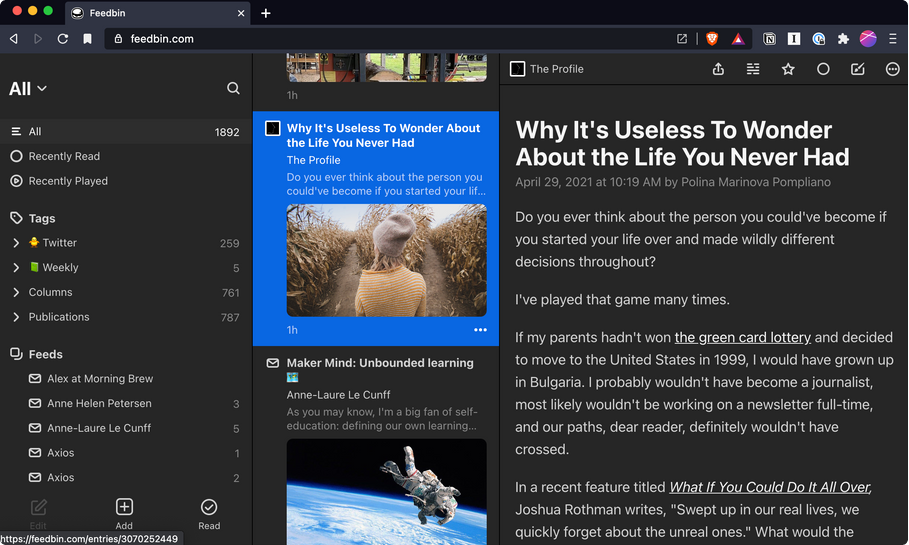Failing to slow down its requests severe
This app continues making requests for feed content on a website, even after the site informs it to wait a while before making any more requests.
Why it's a problemThe excessive traffic makes a website sluggish by hogging the site's resources that can be used for other site visitors. The behavior can also cause websites to exceed their limits, making them more costly to maintain. In fact, one of the main reasons the site tells the app to slow down is usually to avoid an increase in costs.
What it means for usersWebsites are likely to block this app from accessing feed content, causing feeds to stop working.
How to fix itWhen a website tells this app to hold off on requesting content for a specific amount of time, it should do so.
Requesting feed content unnecessarily severe
This app is unnecessarily re-requesting feed content from websites without waiting until there's actually new content published.
Why it's a problemThe unnecessary traffic wastes a website's resources that can be used for its other site visitors.
What it means for usersWebsites are likely to limit this app from accessing feed content, causing feeds to not update properly or stop working entirely.
How to fix it
The application needs to be updated to
wait
until the max-age of
Cache-Control header expires before re-requesting
feed content or properly implement
conditional requests.
Requesting feed content from the wrong location critical
It's common for feed applications to grab content from some unconventional location on a website to generate a feed because the website doesn't provide it. However, even though the site already tells this app where feeds are located, the app is still attempting to extract content from other areas on the website that clearly aren't feeds.
Why it's a problemWhen a feed app doesn't request content from the right location or tries getting content from areas on a site not designated for feed consumption, the activity looks suspicious. This is likely to cause website owners to block this app from accessing its content.
What it means for usersFeed content obtained from the wrong location can be unpredictable and may not display correctly in the app. If websites block this app because of the behavior, which is likely, feeds won't work at all.
How to fix itWhen the app visits a webpage to retrieve feed content, it should:
-
Get the website's feed location from the
autodiscovery
linkelement of the page and use that location for all subsequent feed requests - Update any attempts by its users to subscribe to the incorrect location in the application to the correct new location without making any further requests to the website for this info
- Ensure the request isn't made to a location on the website that has been explicitly disallowed in its robots.txt file
Not accurately identifying itself critical
Sometimes feed apps provide very little or inaccurate information about themselves to websites when requesting their content, which is what this application is doing. This is usually done to try to blend in with other traffic on the website, stay less noticeable, and decrease the chance websites will classify it as a bad bot trying to bypass a website's restrictions.
Why it's a problemFlying under the radar may be beneficial at times, but when done by a feed reader, it can look very suspicious. So websites are likely to block the application from obtaining feed content for not being identifiable.
What it means for usersIf a website blocks this application for being unidentifiable, which is likely, feeds used in the app won't work.
How to fix itWhen requesting feeds from websites, this app should properly identify itself using a unique User Agent header, with sufficient information so that websites always know what it is.
